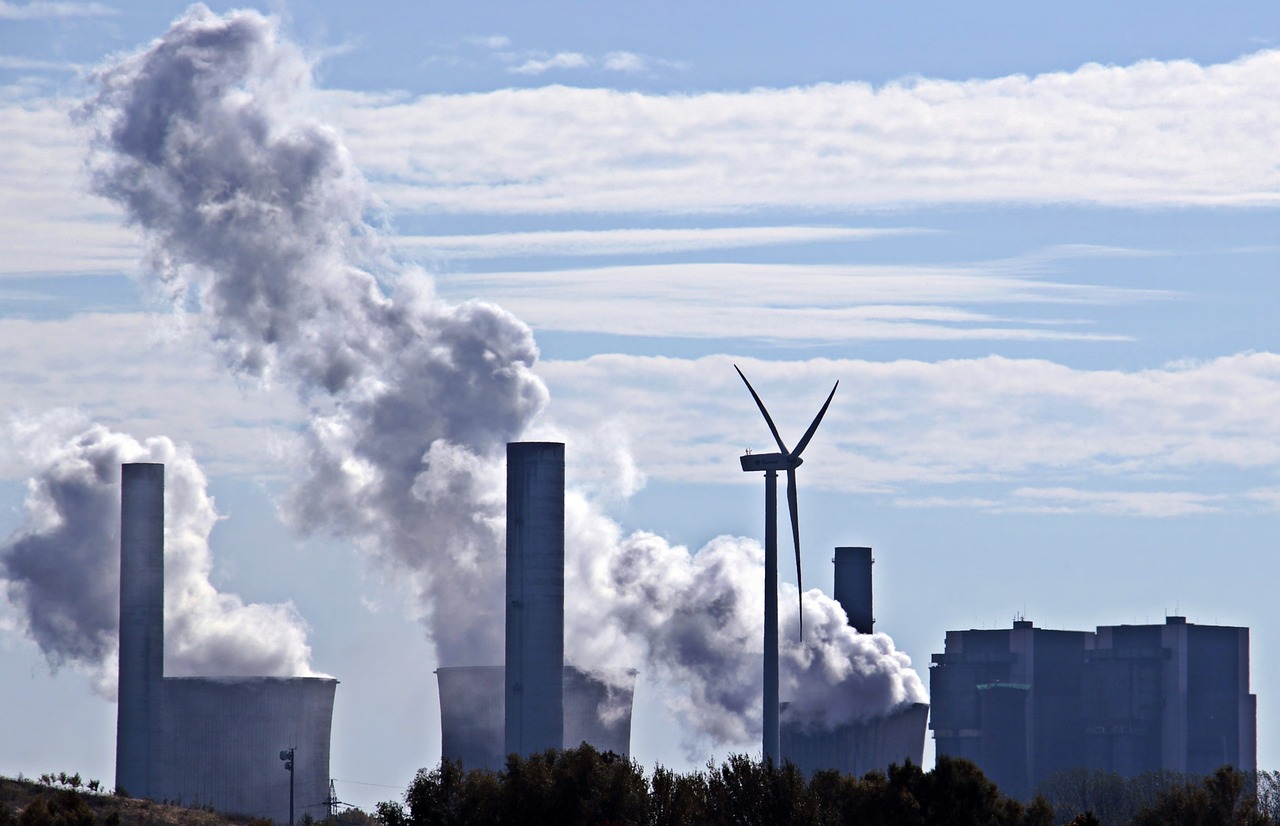CO2 Capture
Capture and storage of CO2 is a well-established method and technology to reduce CO2 emissions. However, in Denmark, we still lack much knowledge about how best to store and possibly use captured CO2. What are the legal, political, and societal challenges? This is what we are investigating in our research network "Carbon Capture, Utilization and Storage."

Although the global community has clear intentions to reduce CO2 emissions, we will still emit significant amounts of CO2 into the atmosphere for many years to come.
But what if we could capture the CO2 and store it or even use it? This is fundamentally what CCUS (Carbon Capture, Utilization and Storage) is about. According to the IPCC (UN's climate panel) and others, it is a necessary method to achieve the goals of the Paris Agreement.
In our research network "Carbon Capture, Utilization and Storage," we are exploring the possibilities of using CCUS as part of the green transition.
CCUS as a green solution
There are several ways to capture CO2.
Biological Carbon Capture and Storage
Natural photosynthesis already functions as CO2 capture when plants and algae convert CO2 into organic matter. Biomass and ecosystems thus naturally contribute to carbon storage. Therefore, our research focuses on how we can cultivate and manage ecosystems to optimize carbon storage, including through afforestation. We also investigate how we can preserve natural carbon content in the soil. Finally, we look at how plant material in bio-based products used in buildings and infrastructure can help store carbon. Such products can help replace energy-intensive products like steel, concrete, and mineral wool, which are made from limited, non-renewable resources.
Geological Carbon Capture and Storage
Another method is to store CO2 underground. Geological environments and materials provide some of the largest and most robust options for permanent CO2 storage.
Specifically, CO2 storage in the ground works by capturing the smoke from, for example, an industry where the concentration of carbon is high. The carbon is then separated from the smoke, compressed, and either reused (for example, to produce specific chemical compounds and eventually green fuels using Power-to-X) or pumped into the ground in a suitable reservoir.
The question is, how can this method best be adapted to Danish conditions? Can oil fields in the North Sea be converted into CO2 storage sites? Which areas on land are optimal storage sites, and what determines society's acceptance of such solutions? How can storage sites be effectively and economically monitored to ensure safe storage? What are the legal considerations related to the regulation of CO2 storage? And how can CO2 storage more generally define the scope of green policies for transition, and thus to what extent society and individuals need to change consumption patterns and behavior?
CCUS as a green solution at KU
Our research network "Carbon Capture, Utilization and Storage (CCUS)" supports the development and maturation of methods, concepts, and technologies to capture, use, and store CO2, both from sources on the ground and from the atmosphere. We focus on fossil, atmospheric, and biogenic sources (those we can harvest from fields, forests, and the sea, and which are part of the natural carbon cycle). The goal is to achieve a carbon-neutral society and, in the longer term, a carbon-negative society, where we remove more CO2 from the atmosphere than we emit.
The goal is to achieve a carbon-neutral society and, in the longer term, a carbon-negative society, where we remove more CO2 from the atmosphere than we emit.
The development of technologies to capture and store CO2, as well as increased use of biomass and carbon storage in nature, can have consequences for the environment, biodiversity, and our use of land. The technology involves large-scale infrastructures for transporting CO2 and storing it underground, which can affect people's livelihoods. These aspects must be fully addressed to ensure that CCUS is carried out sustainably. Additionally, the development and implementation of the full spectrum of CCUS solutions may require a range of regulatory measures and possibly support schemes or other market incentives.
In our research network, we combine natural science with a social science and humanistic understanding, where societal, environmental, and economic aspects are considered. Only in this way can we ensure that the solutions for carbon capture and storage are truly sustainable.
Researchers in the network
| Kresten Anderskouv |
Department of Geosciences and Natural Resource Management |
Faculty of SCIENCE |
| Emil Engelund Thybring |
Department of Geosciences and Natural Resource Management |
Faculty of SCIENCE |
| Claus Beier | Department of Geosciences and Natural Resource Management |
Faculty of SCIENCE |
| Simon Westergaard Lex | Department of Anthropology |
Faculty of Social Sciences |
| Lone Søderkvist Kristensen | Department of Geosciences and Natural Resource Management |
Faculty of SCIENCE |
| Dorette Müller-Stöver |
Department of Plant and Environmental Sciences |
Faculty of SCIENCE |
| Jiwong Lee | Department of Chemistry |
Faculty of SCIENCE |
| Niels-Ulrik Frigaard | Department of Biology |
Faculty of SCIENCE |
| Lars Tønder |
Department of Political Science |
Faculty of Social Sciences |
| Niclas Scott Bentsen | Department of Geosciences and Natural Resource Management |
Faculty of SCIENCE |
| Centre for International Law and Governance |
Faculty of Law |
